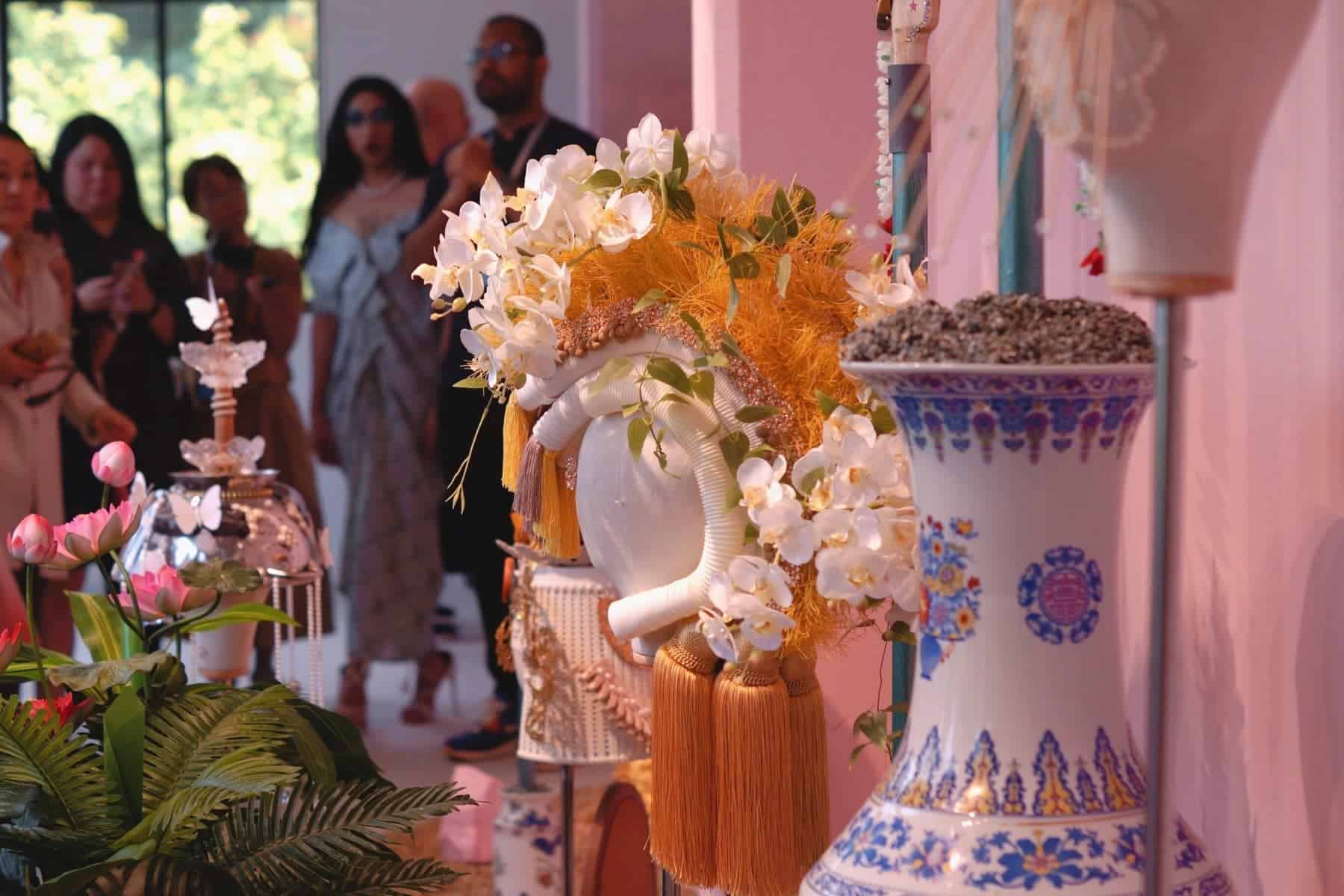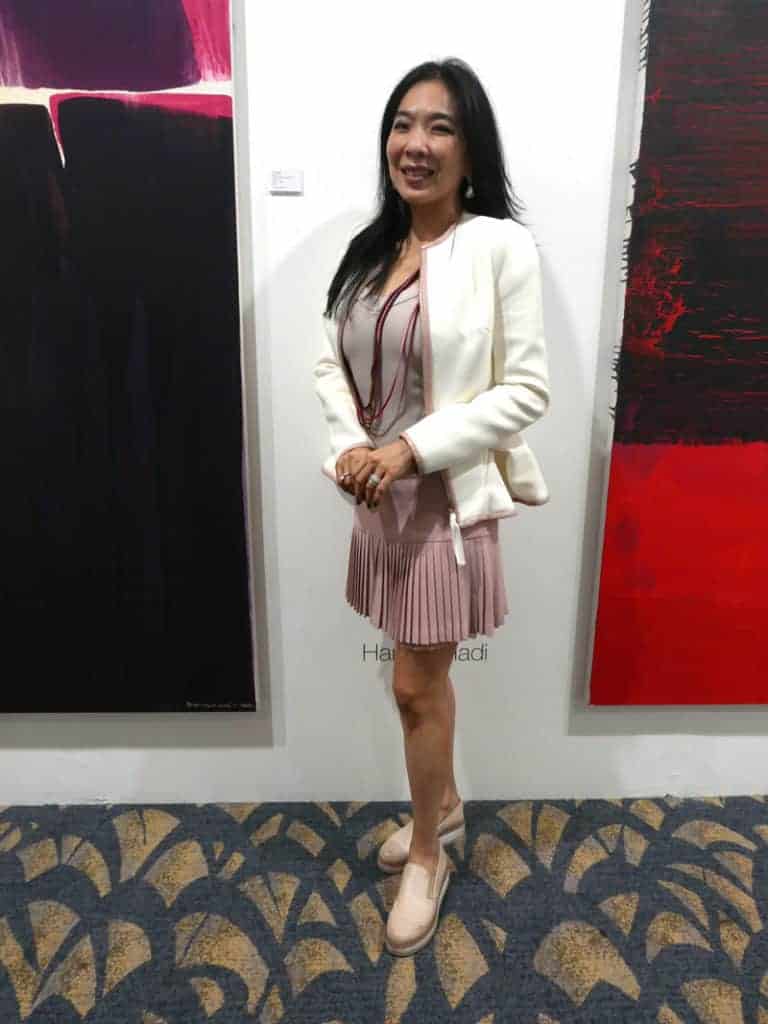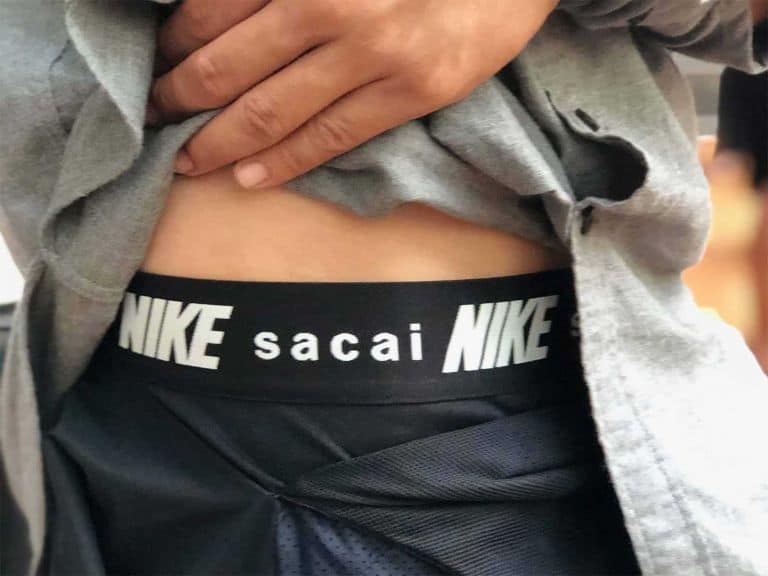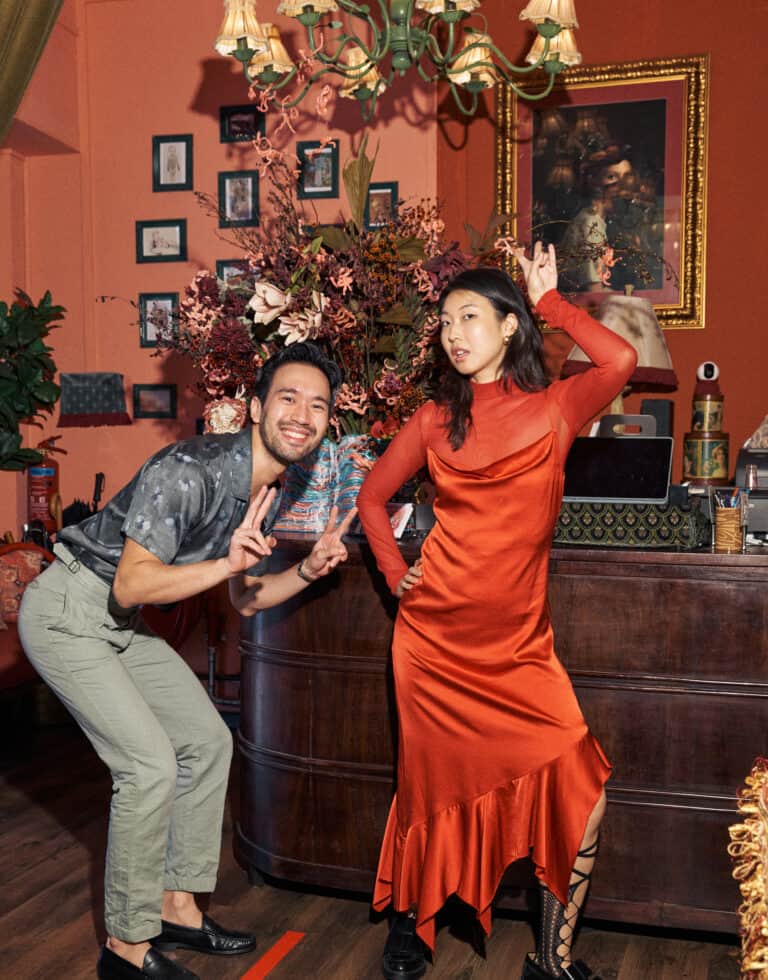Lunar Lucah, Drag Queen
Venue: Singapore Biennale 2019, Gillman Barracks
We met Lunar at the media preview of the Singapore Biennale, where she had accompanied artist Khairullah Rahim at his presentation of his mixed-media installation, Intimate Apparitions. Commissioned for the Biennale, the artist worked with sculptural assemblages to question what it means to describe a space as ‘public’ or ‘private.’ In a country such as Singapore, where there is such a premium placed on land and space, the artist investigates how different marginalised, or fringe communities may have chosen to inhabit common spaces in unexpected ways, thereby creating public spaces outside of official narratives. His sculptures utilise everyday objects in surprising ways, urging the viewer to think beyond the literal, and to imagine alternative possibilities.
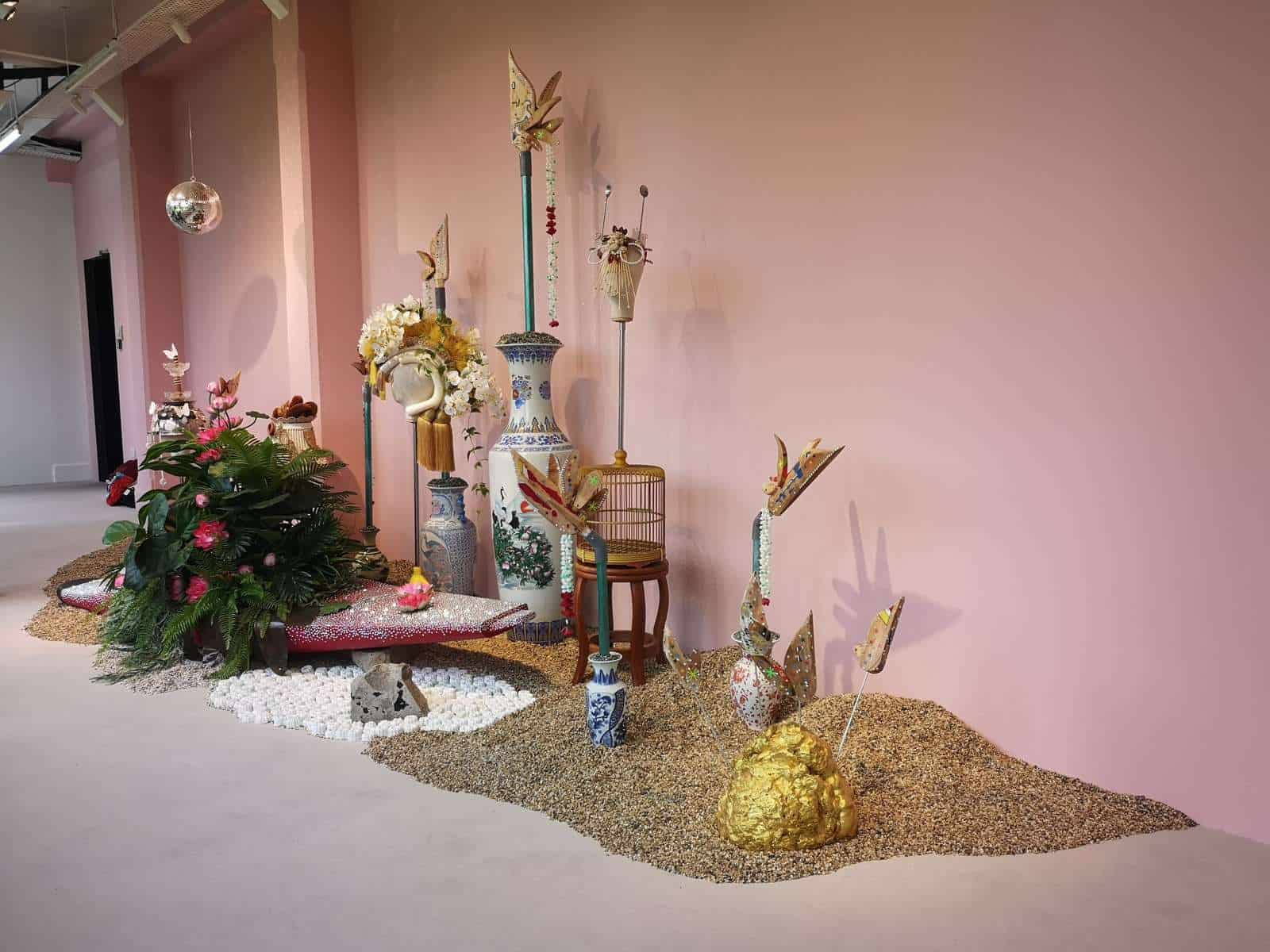

Hello Lunar, tell us about this incredible outfit.
My pearls and shoes are from my personal collection. This is a kimono robe that I found at home. I just styled it slightly differently, pinning it here and there to create the shape that I wanted. It’s literally just been put together with safety pins here and there.
And where do you get your things from?
They are mainly thrifted, but some of them are of my own design or designs from my friends.
Drag is usually associated with high drama–is that how it is for you?
Drag queens are known for drama and drama and drama, but for me, it’s much more of a subtle visual expression. I would like people to take a look at (my outfit) and really analyse what it is, looking at the details rather than just the frontal view.
Do you see yourself as an artist?
I do see myself as an artist. My background is in fashion design, so I incorporate elements from that background into drag as well.
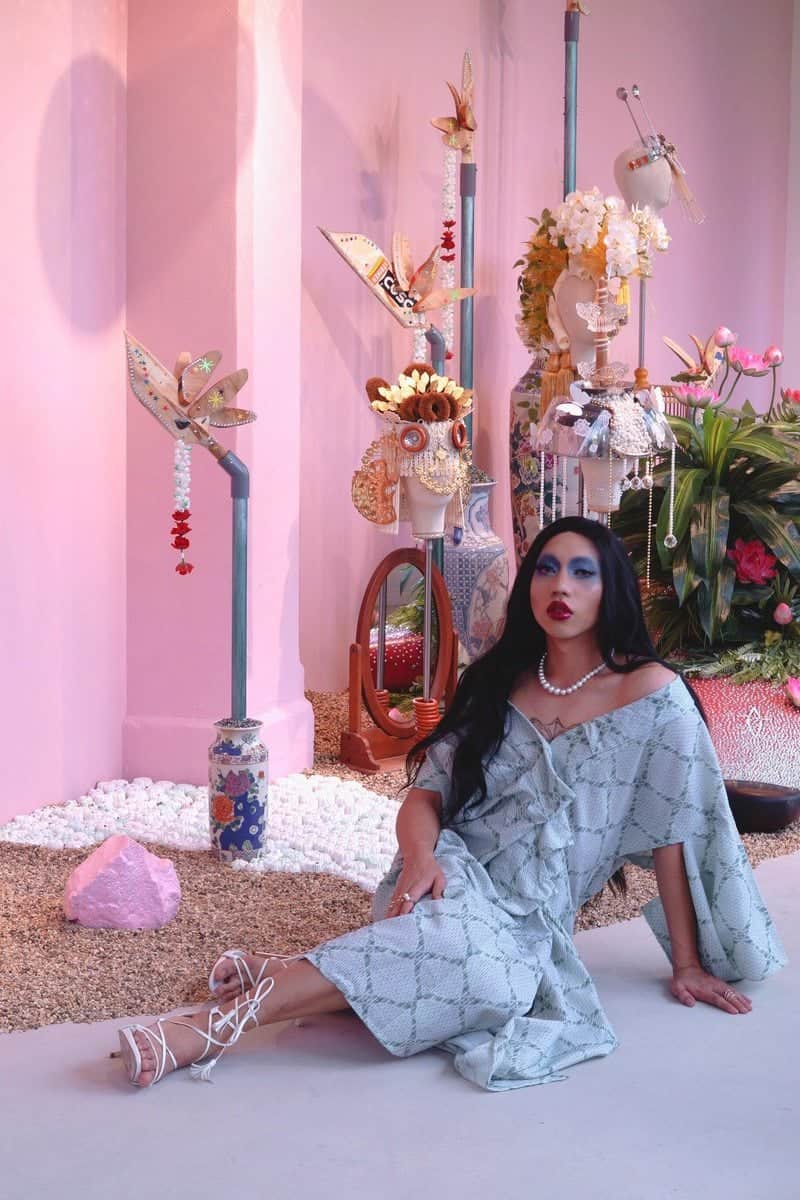
And how did you get into drag?
My friend is a drag queen, and one day just asked to paint my face. That’s how I got hooked into it.
What’s one thing you’d like people to know about this installation that you’ve been a part of?
This is an activation of spaces, and it’s also about intimate spaces. For us drag queens, the majority of us don’t have the privilege of having spaces of our own, even to do our makeup and things like that, for events and shows. So this is a chance to showcase an intimate space of ours, something that’s behind the scenes.
Have you been involved with other art projects?
Yes, but mainly with independent student artists and things like that. This is the first time I’ve been involved in such a big platform.
Tell us about your name and what it means
So ‘lunar’ literally just means ‘moon.’ And then ‘lucah’ means ‘pornographic’ in Malay.
Artist Khairullah Rahim joined the conversation to share some of his thoughts about his artwork.
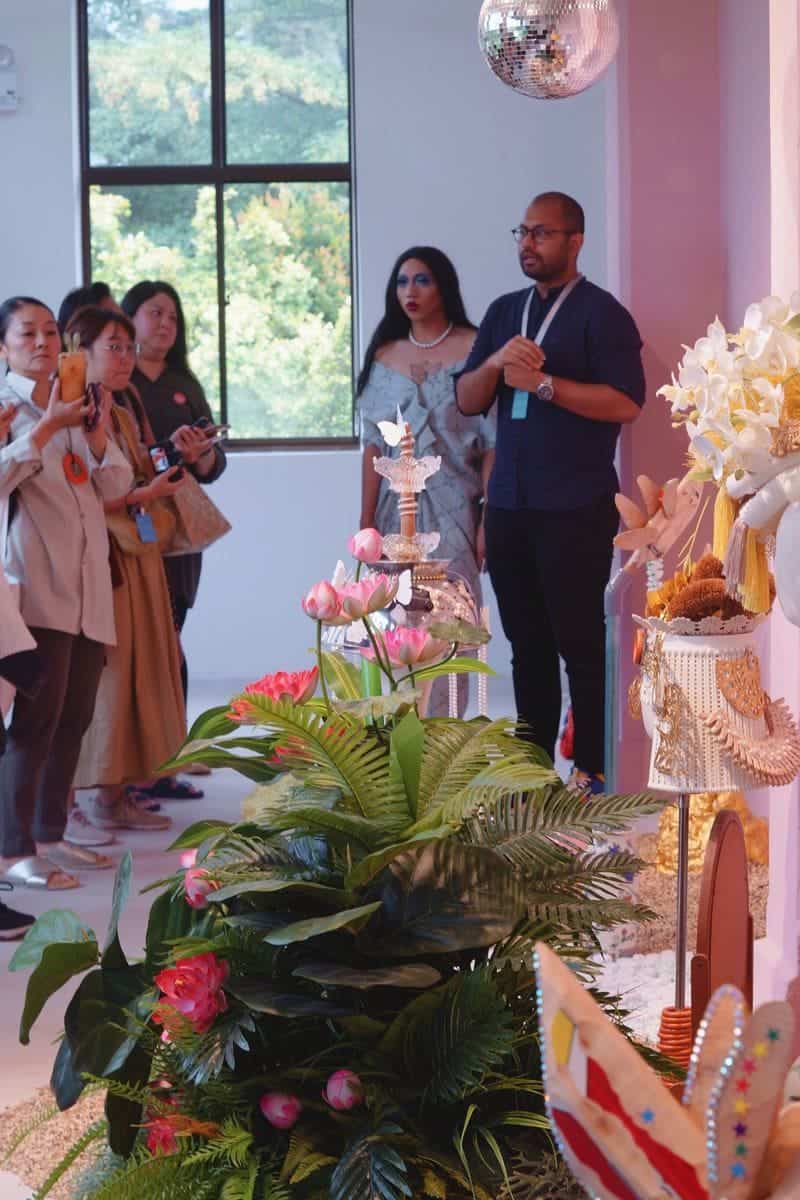
Tell us more about the work Khairullah, what is your approach when working with marginalised communities?
One of the things that I keep thinking about throughout the materialisation of these works is how to go about concealing and revealing certain things. I have to be a bit more cautious especially when I’m speaking about safe spaces or these (marginalised) communities. I do not want the artwork to contradict my intentions.
For some of these communities, the more visible they are, the more prone they are to be scrutinised or to be discriminated against further. So, if you look at the work, a lot of it is still quite coded as there is something to be said about being present without being too visible. There are things here which people would not notice if I did not expressly share the facts with them, like for example, how these heliconia plants are actually made of cricket bat.
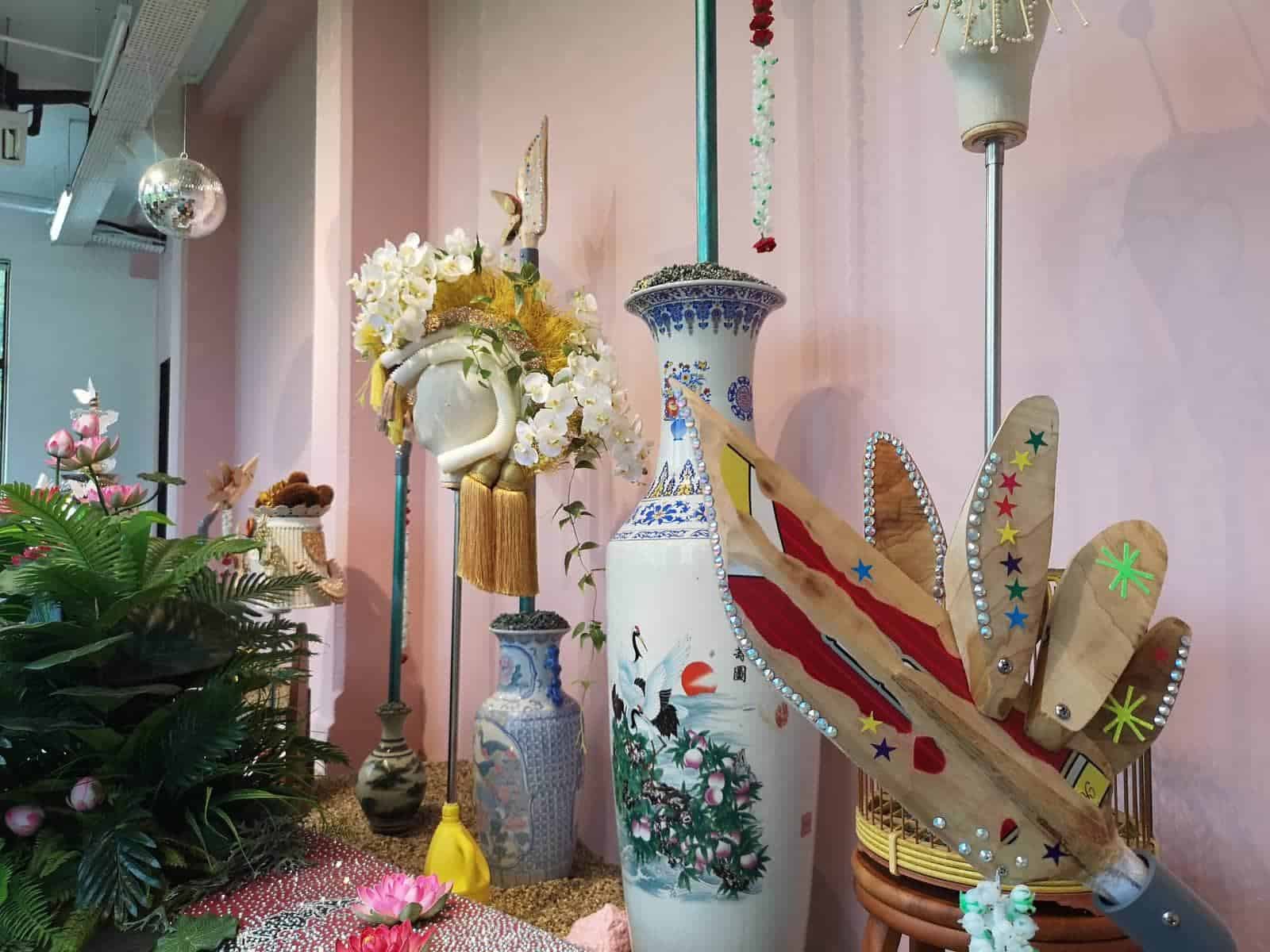
I do think it’s more productive for the audience to think about alternative ways of reading what they see, or observe. Most of the time, a lot of us rely on information and answers without even thinking or considering alternative possibilities of what something could mean to someone else.
And what’s your relationship like with the communities that you work with? Are you friends, or do you pay them a fee for their involvement?
Yes, they are my friends and they get a fee. But also I make it very clear that I do not want them to be involved in the art-making aspects. An easy way of thinking about collaboration would be to work together, literally, but I (count on) them spending time with me and sharing their insights and information. I think these are far more valuable for me, and hopefully, I manage to present the work in the best way that I can. It is very tricky especially when these are not (our own) communities.
After all, who are we to share some of these stories? It comes with a lot of responsibility.
I have to be careful about how I put this information out there. I have to be respectful, without being too overtly explicit, while at the same time making sure that the work does not endanger these communities.
________________________
Interested in finding out more about the work? Intimate Apparitions is on display as part of the Singapore Biennale 2019, at Gillman Barracks.
This interview has been edited and condensed for clarity.
If you’re feeling inspired to write something about the Singapore Biennale 2019, enter our writing contest and stand to win up to S$150 in dining vouchers, amongst other attractive prizes. Details on our Facebook page here. The contest is open to all.
